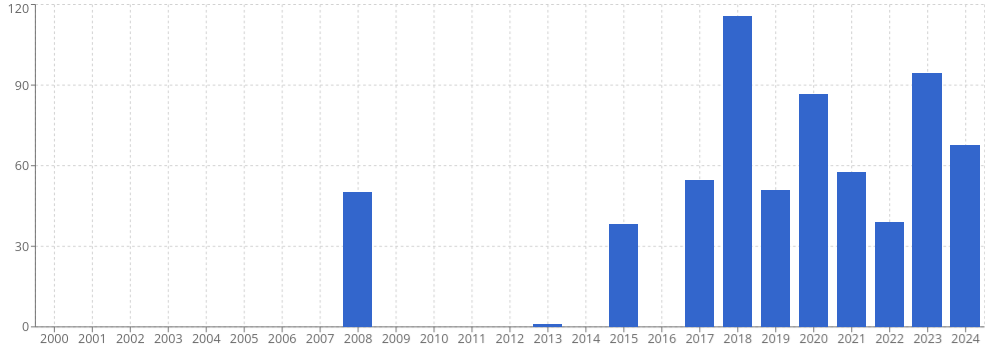Abdoulaye Konaté, using textiles to create art
[30 Apr 2024]The African country Mali is a major source of artistic talent, and, as a founding member of an African fund for culture aimed at financing projects by young artists, Abdoulaye KONATÉ is one of its major representatives and supporters. Born in 1953 in Diré, Abdoulaye Konaté found his expression in textiles in the early 1990s, first using cotton then bazin as backdrops for installations with socio-political references. Today, it is in the ACI 2000 district of Bamako that he composes pictures that are a cross between paintings, sculptures and installations. Helped by his team of assistants, he cuts and sews strips of fabric which, placed end to end and superimposed, produce masterful works with subtle chromatics. He produces large formats, often reserved for institutions, foundations and museums, as well as smaller pieces that better meet the needs of private collectors.
Beyond the aesthetic delight that his works provide, the color nuances in the reliefs, shapes and shades suggest dialogues with nature and with cultures, and the patterns punctuating the surface of the works evoke the ancestral stories that are related to the reactivation of knowledge in the creation of the textiles themselves.
His career
After training in painting at the National Institute of Arts in Bamako, Abdoulaye Konaté studied at the Instituto Superior de Arte in Havana from 1978 to 1985 and already exhibited the fruit of his research at the Havana Biennials (in 1984 then 1986). At a time when interest in African artists began to vibrate outside the continent, his works began their great journey: the World Bank in Washington in 1991, the Setagaya Museum in Tokyo in 1995 and the Dakar biennial in 1996 where he received the Grand Prix Léopold Sédar Senghor with his Tribute to the hunters of Mandé. This composite work makes such a lasting impression that it has been requested for various exhibitions in Bamako, Dakar, Paris and Tokyo.

Konaté, Papillon bleu pour Fès (2016)
In 2002, Konaté covered the stadium at the opening of the African Cup of Nations with a gigantic canvas, created in tribute to the victims of AIDS. He was made a Knight of the National Order of Mali and named a Knight of the Order of Arts and Letters of France that same year. Subsequently his works were shown at Africa Remix in Düsseldorf, Paris, London (2005), in the Documenta in Kassel (2007) and in New York where the Metropolitan Museum of Art confirmed to the world that Konaté may be considered one of the great figures of current art by acquiring a majestic work in 2015 (Bleu no. 1, 234 x 368.9 cm).
In 2022, Konaté was recognized as a “master” during the Dakar Biennale. Enjoying international demand, his works were exhibited in Kassel for Documenta, in Japan and in Casablanca with Galerie 38. He also participated in the 1-54 art fair in London with the Primo gallery, while taking part in group exhibitions in Ghana, Denmark and Switzerland. His works have left an indelible mark across the world, culminating in a record year at auction in 2023, despite a relatively small market in terms of supply.
Konaté’s turnover at auction in thousands of dollars. Copyright Artprice.com

With just two results, Konaté was among the top 2,000 artists on the global art auction market in 2023, whereas he was not even among the top 50,000 a decade ago. Last year, a sale in Morocco saw his work “Papillon bleu pour Fès” (2016) sell for $93,300 at Artcurial Marrakech, setting a new personal auction record. However, this auction record also tells us that his market is not subject to speculation, since many younger artists have been fetching much higher prices.
Konaté’s works are rare on the auction market, as collectors are reluctant to part with them. Their value has been increasing gradually, like their creator, with patience and discretion, reflecting genuine appreciation rather than speculative fluctuations.
Artmarket Insight article published in our partner magazine Diptyk




 0
0
